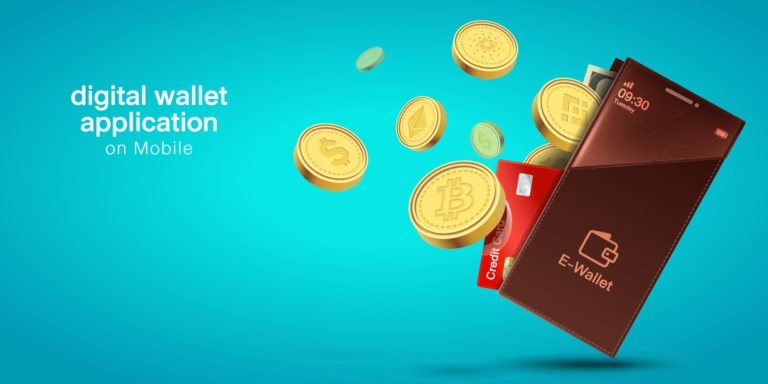
Unlike a leather wallet, you cannot keep your Crypto Wallet in your jeans. However, certain ones allow you to keep the private keys with you. If it sounds confusing, you are not alone. Cryptocurrencies have penetrated all spheres of our life, but most people still know surprisingly little about them. Buying a cryptocurrency or investing in NFTs – all require a crypto wallet. Let us discuss their different types and how you can set up your own crypto wallet today.
Some crypto wallets only allow you to receive, send, or store cryptocurrencies. Others are more advanced and even allow you to buy or trade currencies right from the wallet.
To understand crypto wallets, let us see how they are different from normal ones. The latter one keeps your money, right? But guess what; a crypto wallet does not store your cryptocurrencies. Instead, it keeps addresses to your cryptocurrency. These addresses are present in the form of keys: public keys and private keys.
In essence, a crypto wallet is a software program, or in some cases, a physical device that allows you to store crypto and perform transactions on it. The public keys are alphanumeric addresses that let users send crypto to that wallet.
On the other hand, a private key works more like a bank account. This key allows you to make a transaction which means anybody with a private key can access the amount of cryptocurrency held in the wallet.
There are two fundamental ways these keys are stored, which we will learn later.

To understand the working of a crypto wallet, we first have to know about blockchain technology. Blockchain, for example, Ethereum, is a digital ledger that allows users to store and manage data in Blocks. The best part about blockchain technology is that each transaction is secure and recorded on it.
The cryptocurrencies, such as Bitcoin and Ethereum, are present on a blockchain in the form of coins. When you buy crypto, you do not get the actual coins in your wallet. But the addresses to those coins are transferred to you.
Here are some of the services provided by crypto wallets:
Receive Assets: A user will have to generate a public key to receive a cryptocurrency. After generating the key in your crypto wallet, the user can share the alphanumeric address or the QR code with another user.
Send Assets: Similarly, you will need the public key of another user to send them a cryptocurrency. However, remember that some wallets only support certain types of cryptocurrency. For instance, you cannot send Bitcoin (BTC) to Bitcoin Cash (BCH) wallet. If you do, you may lose the digital assets forever.
Other than that, you can manage and access your assets in a secure manner. Also, some wallets allow you to interact with a ‘dapp’ (Decentralized App) and any shop that supports cryptocurrency.
While setting up a crypto wallet, you have to remember the different types of wallets you can have.
The easiest type of wallet is called Custody Wallets. When you buy cryptocurrencies, like Bitcoin and Ether, from an exchange or an app, for instance, Coinbase, that app holds the crypto for you. In essence, your assets are in the custody of that exchange on your behalf. Even if you forget the password, the coins will be secure.
When we talk about Self-Custody Wallets, there are two main types: Software and Hardware wallets.
As the name suggests, a software wallet can come as a web, desktop, or mobile app. Unlike Custody Wallets, you are liable for anything that happens to your assets.
On the other hand, hardware wallets provide top-level security to your assets. They come in the form of a USB stick and manage the keys. You can only access your data once you connect it with a device.
Since the data is mostly kept online in the software wallets, they are referred to as ‘hot’ wallets. But the data and keys are kept offline in hardware wallets, so they are also called ‘cold’ storage.
There are pros and cons to both types, however, it all comes down to ease and security. If you want to opt for ease, you should go for the software ones. It is not like they are not secure; they are. However, you should apply 2-step verification on them. But if you want the best security for your cryptocurrencies, hardware is the way to go.

Whether you use cold storage crypto wallet or hot storage, your cryptocurrencies will be secure, thanks to blockchain technology. Just don’t hand out your private keys as Christmas presents.
Moreover, doing transactions is super easy with a crypto wallet, just as you use a credit card for your real money. Whether you are trading tokens or coins, your crypto wallets can do all that for you.
The only con to using a crypto wallet is that you need to be adept at using computer software. Although you will not have to struggle much with it, they design their desktop app and mobile app to be user-friendly.

If you are wondering which crypto wallet to go for, here are a few recommendations: MetaMask, Coinbase, Ledger Nano X, Ledger Nano S, Trezor, Exodus, and Mycelium.
Some wallets, including Ledger Nano, Exodus, and Mycelium, are best for Bitcoin transactions. Whereas MetaMask is the best choice if you want to buy Non-Fungible Tokens.
Stay tuned if you want to learn about the best crypto wallets!